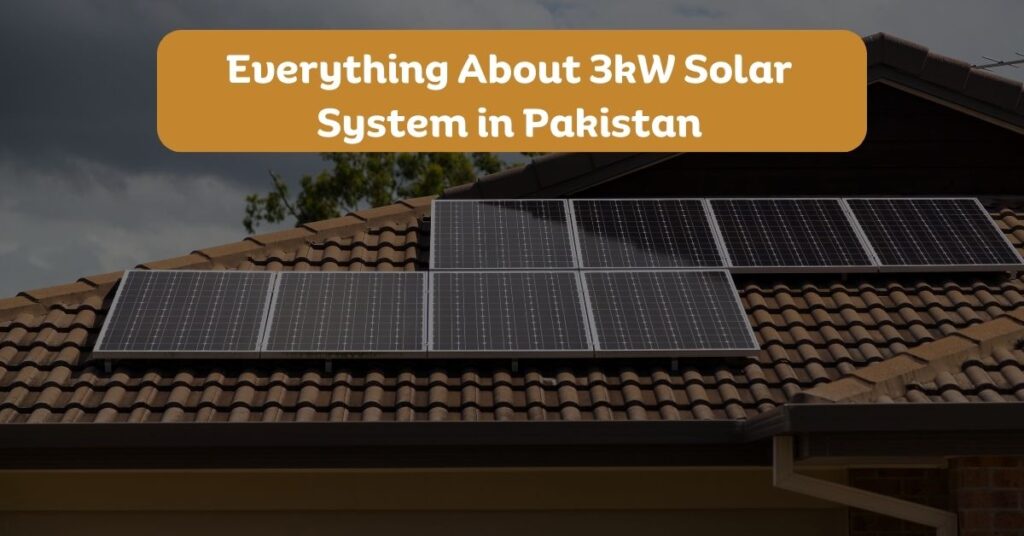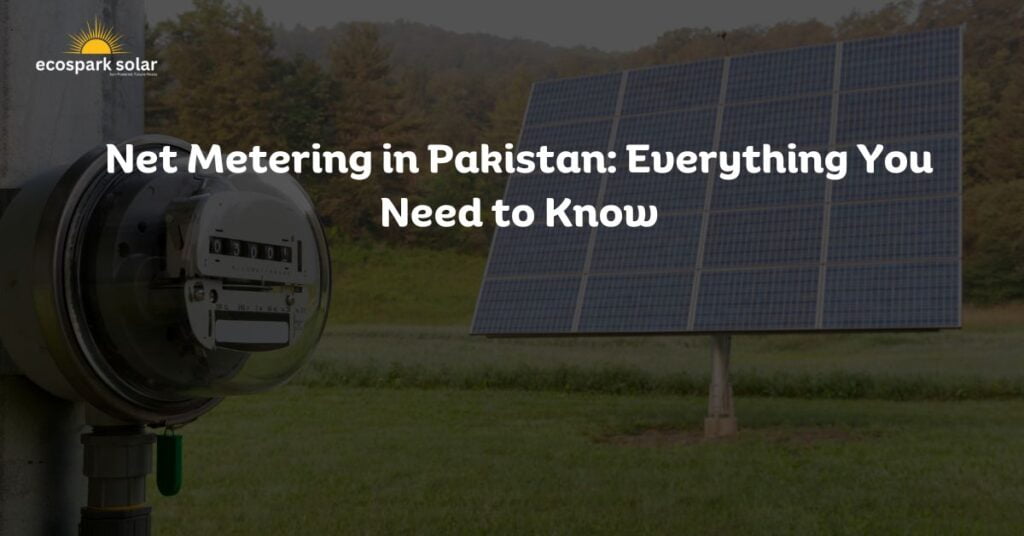When you decide to go solar, one of the important considerations is the type of system to install. You have 3 options:
- Install an on-grid solar system
- Go completely off-grid
- Or, install a hybrid solar system and enjoy the best of both worlds.
In recent years, hybrid solar systems have emerged as a game-changer in the country’s renewable energy landscape. By combining the benefits of solar and conventional energy sources, these systems offer a reliable and uninterrupted power supply, making them an attractive option for both residential and commercial users.
But how does it work? And how is it different from other types of systems?
That we will discuss in this article. Specifically, we will discuss the following:
- What is a hybrid solar system?
- How does it work in Pakistan?
- Does it offer any benefits to you?
- Components required for a hybrid solar system
- How to size a hybrid solar system?
- Price analysis of popular hybrid system sizes
Understanding Hybrid Solar Systems
Hybrid solar systems are advanced setups that integrate solar panels, energy storage systems (batteries), and grid connectivity. The key objective of these systems is to optimize energy generation, storage, and consumption, ensuring a continuous power supply even during periods of low solar irradiation or grid outages.
In simple words, hybrid solar systems combine the benefits of both on-grid and off-grid solar systems. For example, one of the limitations of on-grid solar systems is that it doesn’t function in load shedding, which is a frequent phenomenon in Pakistan. On the other hand, off-grid solar systems are not always feasible—they are expensive and can become costly to maintain, ultimately defeating the purpose of saving on your electricity bills.
Hybrid systems are particularly advantageous in regions with unreliable grid availability or when there is a desire to reduce dependence on the grid. But how do they work? We will talk about that. First, let’s discuss the components required for hybrid solar systems.
Components Required for Hybrid Solar System
Hybrid solar systems consist of four primary components: solar panels, an inverter, a power meter, and batteries. Other components include charge controllers, mounting structure, wiring, etc.
- Solar panels, which are made up of photovoltaic cells, convert sunlight into electricity through the photovoltaic effect. These panels are strategically installed to capture maximum solar irradiation and convert it into direct current (DC) electricity.
- The inverter plays a central role in the system by converting the DC generated by the solar panels into alternating current (AC), which is compatible with household appliances. It also manages the energy flow within the system, directing surplus energy for storage in batteries or feeding it into the grid.
- Batteries are an essential component of hybrid systems, as they store excess energy generated by solar panels for later use. During periods of high solar irradiation, when the energy generation exceeds the immediate consumption, the excess energy charges the batteries. This stored energy can then be utilized during low sunlight periods, at night, or during power outages, ensuring an uninterrupted power supply.
- Energy meter: An energy meter monitors the system’s energy generation, consumption, and battery levels, providing valuable data for optimization and analysis.
- Charge controller: This component regulates the charging process of the batteries, preventing overcharging or deep discharging, thereby extending their lifespan.
- Mounting structure: A sturdy and durable mounting structure is required to securely install the solar panels in the desired location, optimizing their exposure to sunlight.
- Wiring and cabling: Proper wiring and cabling are essential to connect solar panels, batteries, inverters, and appliances efficiently, ensuring a seamless energy flow.
How Hybrid Solar Systems Works?

Okay. So your panels generate electricity, which goes to the inverter. From there, it goes to your home to power the appliances. Any excess energy generated by your system during the daytime goes to batteries. The charge controller informs the inverter once the batteries are charged or when the energy is still more than needed. The inverter starts sending the remainder—or excess—electricity to the meter, from where it is sent to the grid.
You are powered at all times. During the day, it is your solar system. At night, it is the grid that keeps you powered. And during bad weather and load shedding, it is your batteries!
Benefits of Installing a Hybrid Solar System
Hybrid solar systems have gathered the benefits of the other two systems and combined them into one. Here are a few benefits that come with installing a hybrid system.
1. Energy Independence
Hybrid solar systems offer greater energy independence by reducing reliance on the grid. Users can not only generate but also store their own energy, minimizing the impact of power outages and rising electricity prices.
2. Reliable Power Supply
Unlike on-grid systems, hybrid systems ensure a reliable power supply, even during extended periods of low solar irradiation or grid outages. Critical appliances, such as lights and charging gadgets, can continue to operate seamlessly.
3. Cost Savings
Hybrid solar systems help reduce electricity bills by utilizing free solar energy and optimizing consumption patterns. Excess energy can be stored for later use or sold back to the grid, offsetting the initial investment over time.
4. Net Metering
You can send extra electricity generated by your system through net metering to the grid. You earn credits against that energy, which you can use during the night. If you couldn’t consume all during that month, they will be rolled forward to the next month. After three months, you can either carry forward the credits for more time or get paid for them.
5. Increased Property Value
Solar power is not a liability—it is, in fact, an investment that comes in the category of home improvement. If you have a hybrid solar system installed, this will increase the property by up to 5%, depending on your area’s land prices. In some areas, where the land is not too expensive, this increase could be around 8%.
Also, homes with solar installed are premium and sold more readily than homes otherwise.
A solar system for everyone.
We’re customer-centric; we will find you a solution within your budget. Whatever your project size, you can always save with Ecospark Solar.
How to Size Your Hybrid Solar System?
Sizing a hybrid solar system is an important step in designing an efficient and effective renewable energy solution. But it also involves a few technicalities. Finding the perfect balance of power involves assessing energy needs, considering solar irradiation levels, and determining the appropriate system capacity.
Here are the key steps to help you size a hybrid system accurately:
1. Assess your Energy Needs
Start by evaluating your current energy consumption patterns. Consider the appliances, electronics, and machinery that you wish to power with solar energy. Calculate their energy consumption in kilowatt-hours (kWh) on a daily and monthly basis.
2. Understand Solar Irradiation Levels
Next, determine the solar irradiation levels in your location. Solar irradiation—or peak sun hours—refers to the amount of solar energy that reaches a specific area. You can obtain data on average daily solar irradiation from local meteorological departments or you can see it in our discussion on solar irradiation in Pakistan.
3. Calculate Daily Solar Energy Generation
Estimate the daily solar energy generation of your hybrid system. Multiply the capacity of your solar panels (in kilowatts) by the average daily solar irradiation in your area (in kilowatt-hours per square meter).
For example, if you want to install a 5kW system, and your region has a daily average of 5 peak sun hours, your system will produce (5kW x 5) 25kWh (units) per day.
4. Determine Battery Capacity
To size the battery capacity, consider your energy consumption during non-solar hours or periods of low sunlight. Calculate the amount of energy you need to store to meet your consumption requirements during these periods and which appliances you want to be powered during load shedding. It is recommended to store at least one to three days’ worth of energy consumption in the batteries.
Related Read: Lead-Acid vs. Lithium-ion Solar Batteries: Which Battery is Best for Solar?
5. Seek Professional Assistance
Sizing a hybrid solar system can be complex, involving multiple factors and calculations. If you are unsure or require precise sizing for a larger-scale system, it is advisable to seek professional assistance from solar energy experts or system integrators.
For example, what we discussed above doesn’t take into consideration your system’s efficiency, the battery’s depth of discharge, and the types of solar panels.
When you let us size your system, we can conduct a detailed assessment of your energy needs, perform accurate simulations, and recommend the most suitable hybrid system size for your specific requirements.
Remember that sizing a hybrid system is a delicate balance between generating sufficient energy and efficiently storing and utilizing that energy.
Price Analysis of Hybrid Solar Systems in Pakistan
If you want to have a general understanding of the price of solar systems, read our article on what the cost of a solar system includes. In this article, we have analyzed the price trends of solar panels in the previous 3 years, including the estimated costs of popular solar systems. If, on the other hand, you want a quick idea about the prices of different solar system sizes, scroll down.
Price of 3kW Hybrid Solar System in Pakistan
The approximate cost of a 3kW hybrid solar system in Pakistan ranges from PKR 600,000 to PKR 8500,000. We usually install around 4kW solar panels in a 3kW solar system so that the inverter doesn’t trip.
The final cost depends on factors such as the quality of components, location, battery capacity, and installation complexity.
Price of 5kW Hybrid Solar System in Pakistan
A 5kW hybrid solar system typically costs between PKR 900,000 and PKR 1,200,000. The price variation is influenced by factors such as component quality, location, battery capacity, applicable taxes, and installation requirements. 5kW solar systems are for those whose monthly consumption is more than 350 units and less than 650 units.
Price of 6kW Hybrid Solar System in Pakistan
For a 6kW hybrid solar system, the estimated cost ranges from PKR 1,250,000 to PKR 1,450,000. The overall cost may increase based on factors such as battery capacity, advanced features, and installation intricacies.
Price of 10kW Hybrid Solar System in Pakistan
A 10kW hybrid solar system is larger and more expensive, with prices ranging from PKR 1,700,000 to PKR 1,900,000. The final cost may vary depending on the battery capacity, system customization, and installation requirements.
Hybrid Solar Systems in Pakistan: Conclusion
Hybrid solar systems have revolutionized the renewable energy sector in Pakistan, offering a reliable and sustainable power solution. By integrating solar panels, energy storage systems, and grid connectivity, these systems provide energy independence, reliable power supply, cost savings, and environmental sustainability. As prices continue to decrease and technology advances, hybrid solar systems are becoming increasingly accessible, enabling homeowners and businesses to embrace clean energy and contribute to a greener future in Pakistan.



